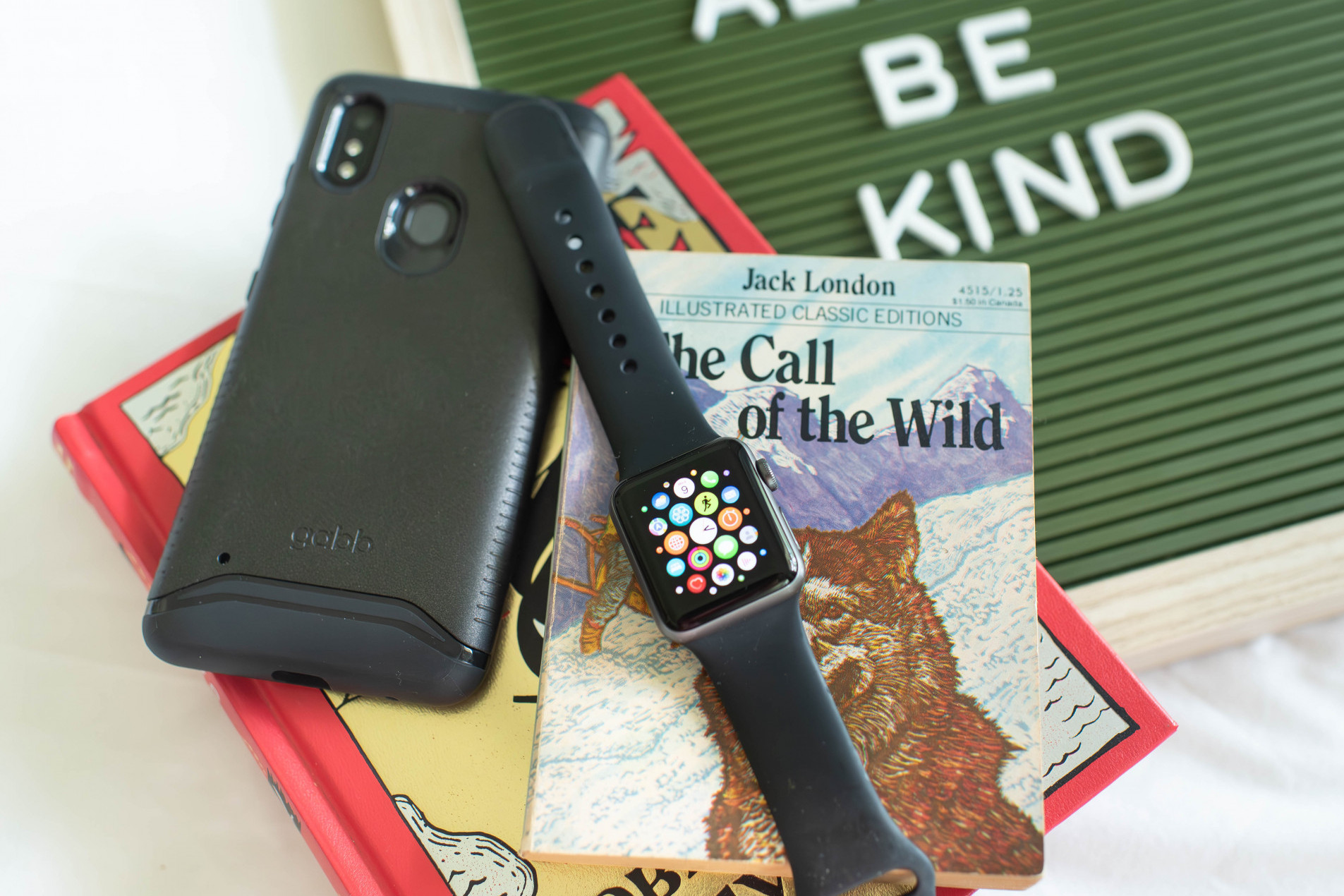We’ve been on the topic of tweens lately — having just shared our 10 Tips for Transitioning to Middle School and High School — and these days when talking about the middle school years, the topic of cell phones tends to come right along with it. So we’ve rounded up several of the smartphone alternatives for tweens and teens that many families like and purchase before they get their first official cell phone. We’ve included a brief overview as well as the apparent pros and cons from fellow DoSayGive readers
There are so many varying opinions on the matter, from what age to get one to what type of device is best. Some families may need to get a cell phone earlier due to both parents working or extracurricular activities, and they have a need to be able to communicate with their child. Others may prefer to wait as long as they can to get their child any type of communication device. We as parents know what’s best for our family, for our children, for our needs. Remember that everyone has different opinions and experiences with technology (and you know your child best), so be sure to do your research prior to buying. We hope this helps get you started!
Gabb Phone
Probably the most popular communication device before tweens graduate to smartphones is the Gabb Phone. It looks similar to an iPhone and has a similar interface to an Android, but is designed without an app store — so no games and no social media — and without the internet. GPS tracking is available, and parents can create “Safety Zones” to enable geofencing that will alert them when/if their child leaves a certain area. Another great feature is Gabb Music, a clean music streaming service that only plays child-appropriate music. The phone does have a camera, and for an additional monthly fee parents can opt to allow group texting and photo sharing so you can stair step your way into this additional freedoms.
Pros: GPS tracking, parent companion app, unlimited talk and text, and no access to the internet, social media, or games.
Cons: Parents are unable to manage contacts, you have to use Gabb Wireless as a carrier, and parents cannot see text message content within the parental control app. Parent control app is not as user friendly as others.
Gabb Watch
The Gabb Watch is a cell phone, GPS device, and interactive watch all in one. Much like the Gabb Phone, the Gabb Watch allows parents to GPS track in real time as well as create “Safety Zones” to ensure their child does not leave a certain, pre-determined area. Texting and contacts are more tightly controlled — parents can create up to 15 custom text presets, voice texting is allowed, and there is a limit of 25 contacts allowed (so no outside calls or texts). There are many great safety features such as an SOS/emergency contact, and there’s even the option to turn on “Lock Mode” where the phone is not usable during school hours. So great! The Gabb Watch also has a step counter and is sweat-resistant (great for those hot days and outside practices).
Pros: Sweat resistant, “Lock Mode” for school hours, limited contacts and no outside calls or texts, GPS tracking.
Cons: Not a lot of extra features (if you have an older tween looking for additional apps), inability to text outside of text presets.
Apple Watch
Another popular “pre-phone” option. The later model Apple Watches (with the GPS + Cellular feature) allow more controls on the watch. On a parent’s iPhone, use the Watch app to set up a family watch. You can add contacts that are allowed to text and receive/make calls.
Pros: You can track children, as well as call and text them. Tweens can text friends, but texting isn’t easy on a small screen so it naturally discourages spam/over texting.
Cons: Phone calls are on speakerphone, so there’s little privacy. Sometimes service can be spotty.
GizmoWatch 2
Verizon’s GizmoWatch 2 is another popular option for a “smart watch.” Children can voice call and text with up to 20 pre-determined contacts, parents are able to GPS track and set GPS boundaries (and are alerted if their child goes outside of them), and the watch includes a fitness tracker and a to-do list tracker. And like the Gabb Watch, parents can create text presets with custom texts so their child is limited to what they say (although there is voice texting, too).
Pros: Pre-set and limited contacts (no outside calls or texts), no social media or internet access, GPS tracking, text customization.
Cons: Price is $149.99 and only works on Verizon network (not compatible with AT&T), many parents say GPS tracking is slow, size may be big for younger tweens.
TickTalk Watch
This smartwatch allows tweens to voice and video call, text, stream music, and take photos — with no internet, games, or social media access. The TickTalk Watch has more than 20 parental controls on the parental control app, and parents can GPS track their tween as well as set a “Do Not Disturb” during class. It has includes an activity tracker, is durable (great for active tweens!), and tweens can set reminders for themselves.
Pros: No internet/games/social media access, GPS tracking, “Do Not Disturb” mode for class, water- and drop-resistant.
Cons: Upfront cost is $189.99, bigger design (so may be too bulky for younger tweens to wear all the time), many parents may not like the video calling feature.
Pinwheel
The Pinwheel phone is a great option for older tweens. It excludes social media and internet browsers, and there is not an app store accessible to children (although parents can add pre-screened apps in the parent portal). Most of the features are parent guided, meaning that the only thing available to your tween on their phone is what you approve and allow. Parents have the ability to create a pre-approved contacts list and are also able to monitor calls (time and length) as well as texts. Parents can set “Do Not Disturb” times for when they’re allowed to use their phone, GPS track their location in real time, read texts (even deleted ones), and manage whether they can send/receive photos as well.
Pros: Contact safe list, screen time management, excellent parental control, GPS tracking, compatible with most wireless carriers.
Cons: Price is upwards of $199 depending on model, limited apps (although that’s a mark in the pro column for some!).
Light Phone II
The Light Phone is essentially as basic as it gets when it comes to a communication device for tweens. They tout it as being “designed to be used as little as possible,” so the features are simple. Tweens can call, text, and listen to music, and it has a calendar and alarm clock. No social media, no games, no apps, and no internet — the distractions are certainly light, which is where the phone gets its name!
Pros: Does not emit blue light, not limited to a wireless carrier (but needs a SIM card), no camera, no internet or social media.
Cons: Cost is $299, no GPS tracking, no parent monitoring.
Sunbeam Wireless
You’ve heard of people going back to a flip phone, but no need to go back to 2005. Sunbeam offers flip phones with talk only features or talk and text features. You can also add features like weather and navigation (good for teens!), but there’s no social media and no internet.
Pros: Easy to use, will work with most carriers as phones are “unlocked.”
Cons: Some teens/tweens don’t want to make a statement with a flip phone.
Of course there are many other smartphone alternatives for tweens and teens out there, so if you have a communication device you’d recommend please leave a comment below!




What do you think?